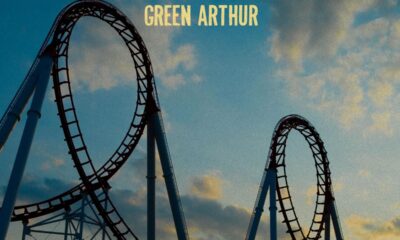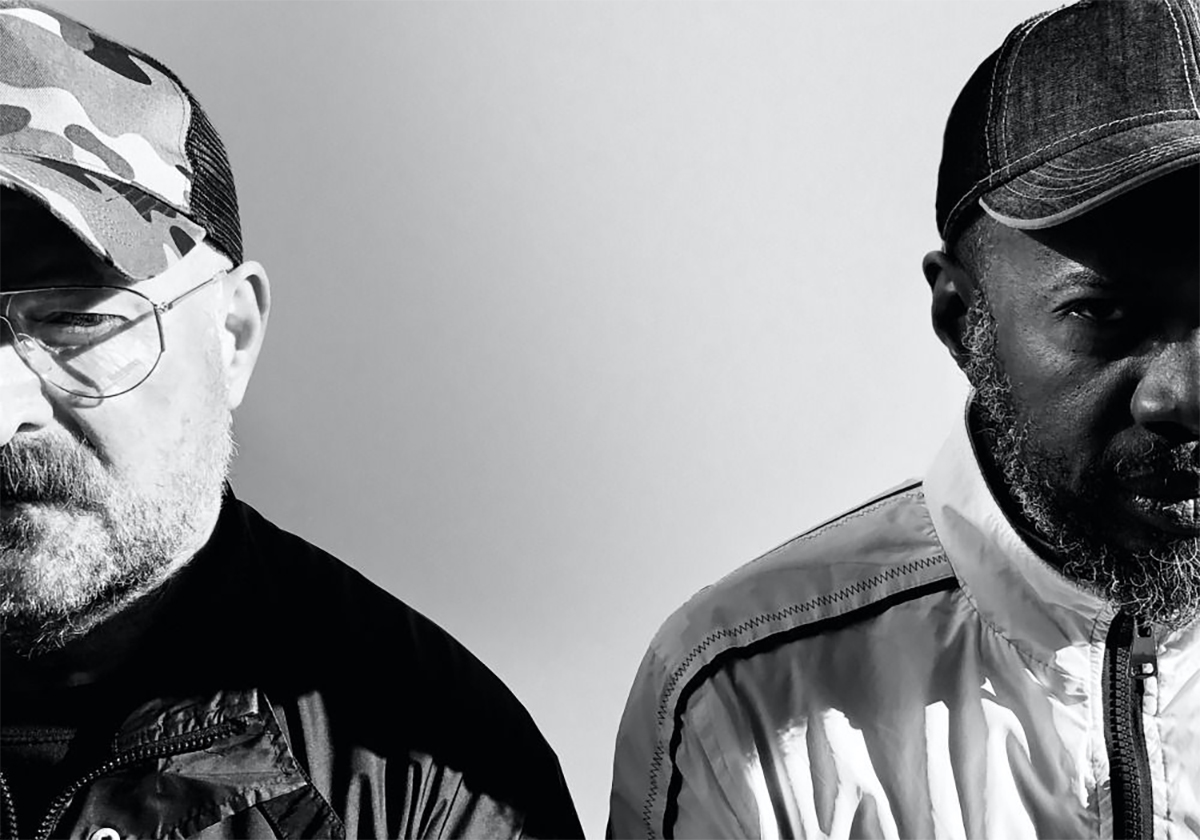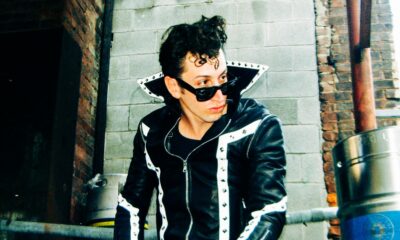Behind the Video
Behind the Video: Unpinnable Butterflies Offer an Inside Look at the Clip for “Sweet Loretta”
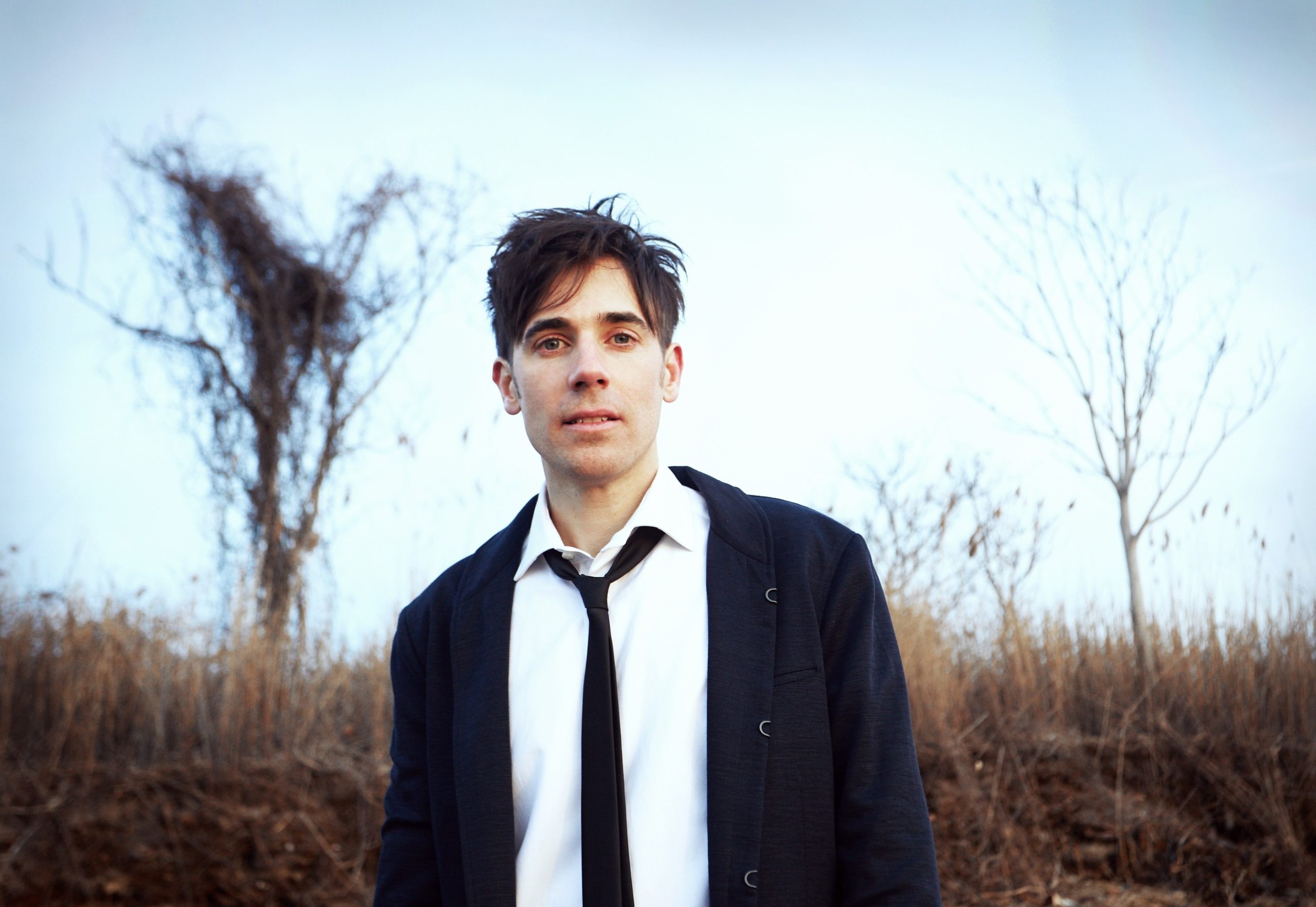
Get ready to ride the waves of the Radio Ocean, with the help of Unpinnable Butterflies. For his brand new record, Gabriel Judet-Weinshel, the man behind Unpinnable Butterflies, has created a diverse, dynamic record, chock full of impressive guest appearances by the likes of Birds of Chicago, Grace Kelly, Jessica Childress, Kate Tucker, and Perla Batalla. The release of Radio Ocean also marks Judet-Weinshel’s second proper collaboration with Scott Healy, a superb multi-instrumentalist who had a long-term connection with late night talk show host Conan O’Brien. Healy’s association with O’Brien and his show dates back to its debut all the way back in 1993. and the two have maintained that longstanding musical connection.
As a composer, Judet-Weinshel’s music can be heard in feature films such as 7 Splinters in Time, the Netflix documentary From Baghdad to Brooklyn, and in various television commercials. Recently, he’s also played as part of a jazz trio called Max Gabriel and the Broken Ribs. Radio Ocean is a record that focuses on the modern world’s less memorable moments of crisis and collapse. Lined throughout the record is a personal narrative cooked up by Judet-Weinshel about the nature of love, heartache, and the pursuit of meaning and connection.
About the video, Kate Tucker, who both sings on the song and appears in the video said:
“Because Gabriel Judet-Weinshel is an artist with boundless creative vision, when you are with him any moment can become a production, a performance, an experience that will inevitably result in a work of art like none other. To make something from nothing is the wonderful magic of Unpinnable Butterflies.
“Gabe and I were on our way back from a grueling six days on an entirely different production when he convinced the driver to pull over so he could film this beautiful old bridge and the river below. And then, to my complete and utter surprise, he convinced me to go running around in my heeled boots after I’d spent ten hours on location. I felt like a kid. I had no idea what we were doing, but Gabe revealed the story frame by frame, the medium (and immediacy) of film lending its own kind of direction.
“When I was all out of breath and sure we were done, he bribed me with a game of cards and a bottle of rum. The rest is… a music video.”
With a cheerful, indie feel and look to it, Judet-Weinshel has cooked up something truly memorable with his latest music video for “Sweet Loretta.” We recently caught up with the singer-songwriter for a session of Behind the Video in which he told us more about shooting the clip, how it all came about, and his music video preferences.
Any mishaps on set?
Gabriel Judet-Weinshel: “If I may, let me first explain. In the context of the conditions which helped actualize the ramshackle affair that is the ‘Sweet Loretta’ music video, production shibboleths like ‘set,’ ‘concept,’ and even ‘mishap’ are not quite germane to what we were dealing with. In all honesty, I didn’t have much of a plan, and there wasn’t really a ‘set’ to speak of, much less a coordinated production. I’m both a musician and filmmaker by trade, and so the ‘Sweet Loretta’ music video actually originated from a collection of stolen moments while I was on a totally separate, pay-the-bills sort of shoot: a documentary project in sylvan Maine, trundling about back roads with some close friends (all of whose nonstop freelancer lives dictate that our best chance of hanging out is to hire one another).
The backbone to the video was that initial footage, and from there I captured some subsequent images (the chalk lyrics on pavement, the singing through the empty picture frame), and also culled a bricolage of archival tour video and collage scraps (paintings, textures, etc.). All to say, this video was more epiphenomenon than phenomenon, and so I, well, welcomed the mishaps. Or, as Picasso says, ‘Ne cherche pas, trouve.’
And, to say more about that initial shoot, impromptu-out-of-the-back-of-a-production van: Kate Tucker, who besides being an incandescent singer-songwriter is also a consummate film/TV producer, happened to be traveling with us that week (she was synchronously in front of the camera, as host/interviewer of said documentary, and juggling all of the complex logistics of the shoot as a co-producer). I was hired as a cameraman, and our last day found the crew at an artisanal goat farm/beer garden. For me, it had been a rather enchanted afternoon bonding with whom I consider to be my spirit animal: goats (as a kid, my parents and I had pet Pygmy goats, all named and beloved — long story). Anyway, I had, nestled in the van seat below me for the duration of our journey, my beloved 16 mm Bolex, a film camera I’ve carried since my teenage years, and I was determined to commit some images to celluloid before the trip was out.
And that afternoon, with our mercenary shoot wrapped, now was our chance, and we found ourselves in a semi-abandoned industrial town (a rusty factory overlooked a murky river), and I cajoled Kate (the poor thing had just worked a 10 and 12 hour days) to hightail it down main street (‘you just robbed a bank,’ I said), and then I joined her, and our buddy E.T. Feigenbaum (also director of the documentary) grabbed the camera and shot/directed. Later we repaired to our farmhouse Air BnB, and with the grill alight and daylight crepuscular, Jared Watson took over as cameraman, and Kate and I dished out cards and rum.
A wheelbarrow played a central role as fireflies coruscated. I had no plan, only a sense of the tune’s rollicking rhythm and jagged narration, a sense that Kate was playing both the titular character, Loretta, and also maybe Joan of Arc (who makes an appearance in the second verse). Jared traded me the camera for the wheelbarrow and made a cameo as a farmer, and the doc’s co-producer, Jessie English (also my favourite photographer), provided art direction, catering, and joie de vivre.”
Any concepts where you started and, midway through, thought what “The fuck are we doing?”
“Back in Brooklyn, with our extemporaneous music video crew scattered to various other projects and states, I tried to finish the video alone. One torrid day in late summer, I shot about 150 feet more of 16 mm after procuring, from its beneficent owner, Sam, an empty frame from my corner vintage furniture store, Yanatiba, in Prospect Heights. I would start the camera (spring-wound) and jump in front of it. I scrawled the lyrics in fragments over several corners of nearby neighborhood, well into the gloaming and beyond. (The next day, I was surprised at how little of the words were legible, despite a dry 24-hours. Brooklyn gets a lot of foot traffic, and also nothing lasts.)
Then it was off to edit. The video was essentially made for the price of the film stock, the processing/transfer, and my time (my time is both cheap and very dear). Even the picture frame was borrowed and returned to Chris (I gave him a CD for thanks, as the mensch wouldn’t take cash).”
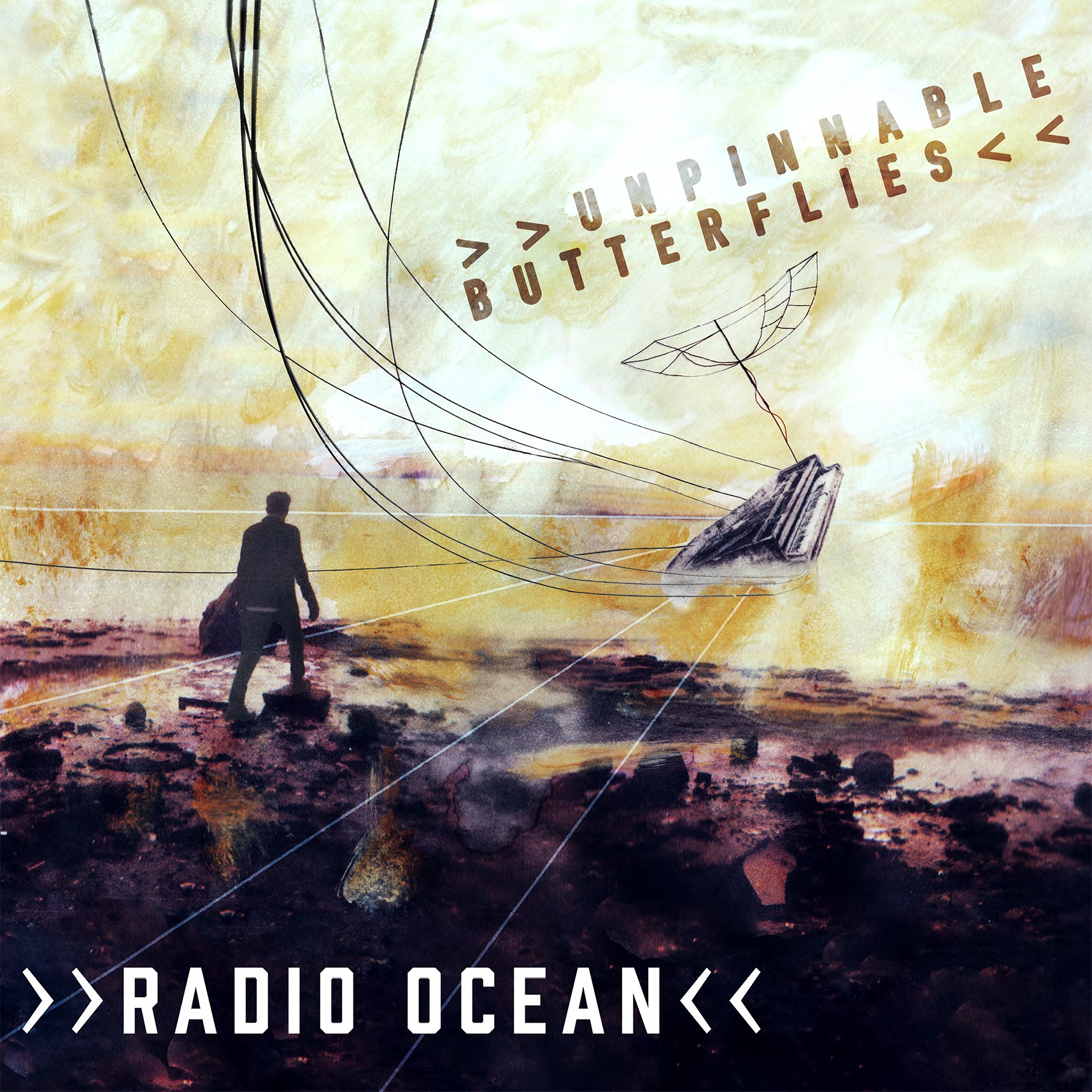
Artwork for the album ‘Radio Ocean’ by Unpinnable Butterflies
If money was no issue what would be in your perfect video?
“I’ve worked in production long enough to know that money is always an issue, even if you’re Villeneuve, Cameron, or Spielberg; one’s vision always exceeds one’s funds, and in fact it ought to. What’s more, the rationing of resources almost always creates creative opportunities, so a video with boundless pecuniary parameters mostly stresses me out. That said, I would love an opportunity to make a magic realist feature that is a cinematic opera and involves clarion elephants, and that would take a budget (feel free to reach out, whoever is reading, and I’ll tell you more; I think I can do it for 1 to 5 million dollars).”
If you could have any guest appear in your video who would you have?
“Leonard Cohen, Beyoncé, Salvador Dali, Buster Keaton, Frida Kahlo, and James Baldwin would be a good start.”
Do you prefer writing a video around the theme of a song or just going to a warehouse and banging out a live performance?
“Music videos are the poems of the cinematic repertoire, and as such, I usually feel performance videos, unless you are truly doing something innovative, are a missed opportunity. Songs, in their often non-linear lyrical structure, play to one of cinema’s supreme strengths — its ability to depict the dream world, the world of metaphor, absurdity, and surrealism. So, unless that warehouse is the warehouse of Childish Gambino/Hiro Murai’s ‘This is America’ (which to me is not only one of the most profound music videos of all time, it’s also one of the greatest works of art in any medium in the last several years), then I prefer something that goes beyond the warehouse and the live performance.”
Tell us about any good, bad or crazy director or film crew-related incidents.
“Shooting the section in the video where I’m singing in front of the yellow wall, I encountered a lovely raconteur working at the autobody shop next door. Asked if it was all right to film this beautiful yellow wall, he consented, not only encouraging me, but launched into a recall of his prior life as a wedding photographer in the pre-digital era, shooting (what I imagine were gorgeous) photos on a Hasselblad. Brooklyn (and the world) teaches me to never assume someone is only who they present to be in that particular moment of time and space.”
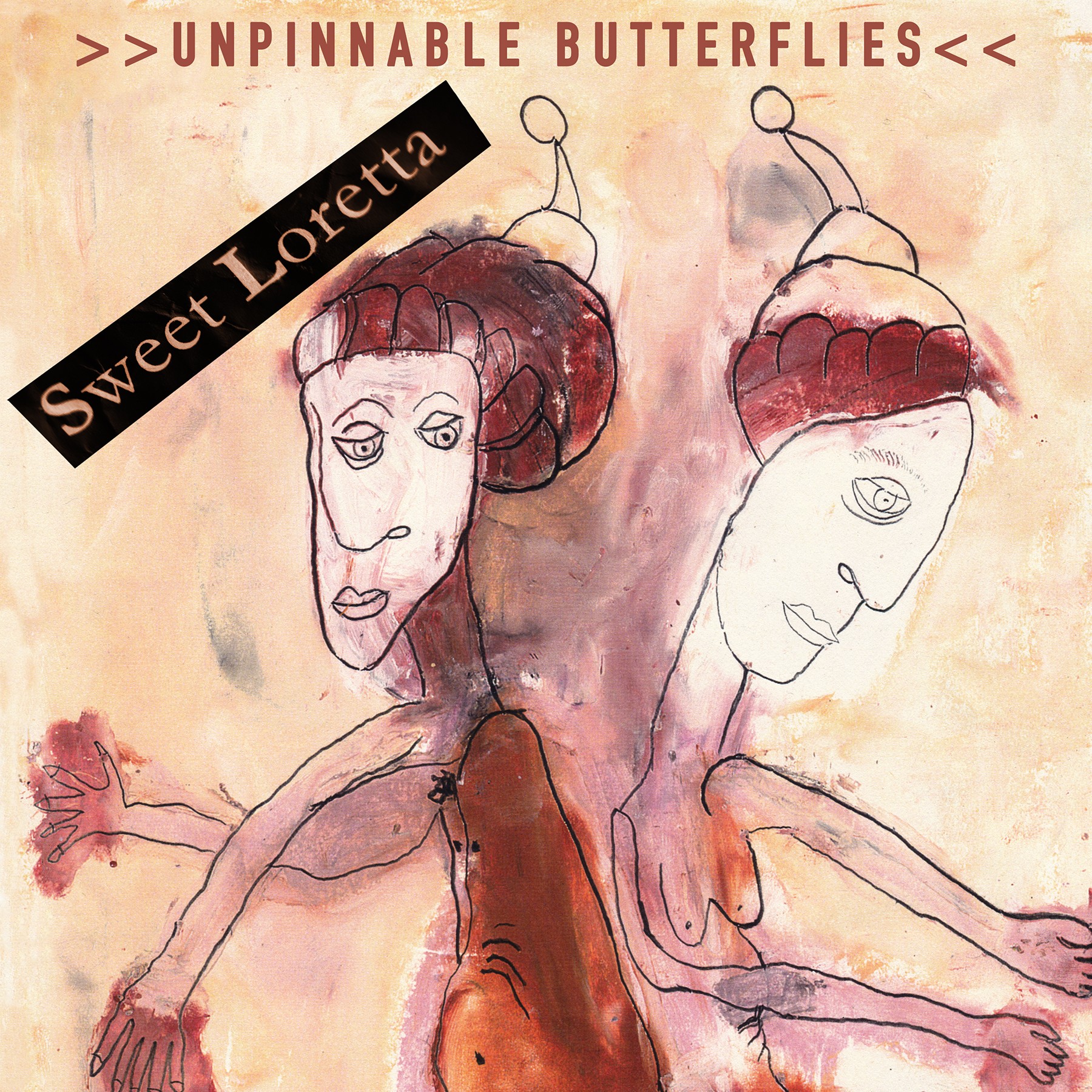
Artwork for the single “Sweet Loretta” by Unpinnable Butterflies
How does the music inform the video in terms of visuals matching sound?
“Gosh, I hope it does. I was trying to capture a spirit of whimsical, lopsided glee. ‘The world is good / you just mixed up the pieces.’ And I was trying not to try…”
Have you ever had such a baller idea for a music video that you’ve written music for it?
“I’m currently writing a cinema-musical, a dystopian opera about a prisoner and her keeper that is at once a love story and a parable about environmental collapse and our chances of transcending it as a species through music, vulnerability, and a proper anamnesis and reckoning with our inner mysteries.”
What is your favourite childhood music video and have you any secret nods to it in your catalogue?
“I was a bit beyond childhood when I first encountered Michel Gondry’s work, but his endless inventiveness and post-modern genius is a constant source of inspiration. To that, all the Palm Pictures DVD sets and their featured directors were hugely formative (though looking at their roster now, I’m keenly aware of it being a bunch of cis-gendered, straight white dudes, alas): Gondry, Romanek, Glazer, Corbijn, Sednaoui, Jonze, Cunningham.
Those late ‘90s/early aught videos were created when music video making was still a legitimate spring-board into a feature film career (now, is it just Instagram followers that gets you a meeting?), when there were still budgets, when people could still make a living in the music world, when there was still enough breathing space (contrary to our current dystopian moment) for the sybaritic luxury of irony and playful postmodern experimentation. Such good stuff. My short films The Heart is a Hidden Camera and Facechasers are probably fairly derivative of that company.”
How important are music videos in terms of increased exposure?
“I have no idea how anything works. Really.”
How important a role does social media play for sharing videos and increasing exposure?
“See above answer. Though…
I’m trying to learn from those who are too young to quite remember 9/11. They seem to have more hope, paradoxically, and certainly more energy. These days, my bones seem less pliant than they used to be. That said, I know in my heart that, like the poet William Stafford said, ‘It is important that awake people be awake, or a breaking line may discourage them back to sleep.’ Yet the internet does seem mainly, and especially more recently, to be just another opiate of the people.
But on more hopeful mornings, maybe there’s more nuance to it than that. Maybe the interwebs is a tool for revolution as much as for Fascism, a tool as much to awaken as to sedate.
And despite the internet, I suppose at the end of the day we’re left with our biological condition, the pullulation of our restless minds, our reckoning with human aloneness and, of course, death.
But also, with a chance of breaking through all this to clarion moments. And, also, love.
I’m sorry. I think I’ve wandered a bit. But, to the question, I would say, ‘Very important.’ Or at least that’s what the kids tell me.”
How much more effective or beneficial is creating a music video now compared to 20 or 30 years ago?
“Methinks there is no longer a mono-culture, whereas before one could make a more convincing argument that, on a given Friday, a solid tranche of a certain age bracket would be listening to Michael Jackson’s Bad, or to U2’s The Joshua Tree, and imbibing that product’s affiliated propaganda. Now, culture and the arts seem atomized ad infinitum, which is both exhilarating and overwhelming. There is so much. And it’s easier than ever to access it. What does it all mean? and what on earth, still, has value? I remember saving up to buy a single CD, and with that expenditure and ownership you were inclined to learn that music in a different, less insouciant way than we encounter music now; you valued it in a different way, as an artifact at once less fugacious and less disposable.
All to say, that’s the macro difference, I think. But how does that affect the music video? Well, though before if you were, say, Bono, you had the power of Universal Music Group, or whatever, behind you, assuring an audience.
Meanwhile, nowadays, there is always the velleity of ‘going viral,’ (am I dating myself by using that phrase?), the better chances of success in an asymmetrical war of attrition (and the less-assured dominance of those artists who do have a multi-national corporation behind them). But all this demands that we’re eternally tied to our devices, accelerating an evolution to skeletons with rear bone spurs where the head meets the neck, torn asunder from the haptic now.
This is why we can’t have nice things.”
Are the benefits worth the costs and effort involved?
“If you have to make art to feel whole, I suppose this question is moot, because making art is always better than the alternative, regardless of the economic, physical, interpersonal, and logistical discomforts.
But if you’re not a person who has to make art to feel whole, certainly there are better, less potentially heartbreaking ways of making a living.
I suppose (as the former sort of person) I’m ultimately concerned with creating a body of work that at once marks my emotional and intellectual perambulation through this frayed world and is also a way of finding my way out of my own head, a vehicle of reaching others and feeling less alone. That is, in itself, an immeasurable benefit.”
Is a well-made DIY video just as good or beneficial as a professionally-made/directed video?
“I’m reminded of a hat line from my days as a street juggler, right before passing flaming torches around a volunteer: ‘Trust us, we’re professionals. That’s why we work on the street.’
Which is to say, I’m less certain of those distinctions these days. My sense is those who make a living making music videos, actually a living, are so much in the minority of folks who actually make music videos. What does ‘professional’ look like now? Did Billy Eilish’s febrile ‘Therefore I Am’ music video, with its shaky-yet-gimbal-stabilized iPhone-esque footage look ‘professional?’ (As of this writing, it has 183 million views on YouTube, so someone is making a living here.)
And meanwhile, there are plenty of ‘professional-looking’ videos; super high-end feeling, with high-production value, made on a shoestring whose creators undoubtedly didn’t make a cent for their labors or lost money.
(Meanwhile, I just learned the other day that the word for amateur comes from the Latin amator, or ‘lover.’ Sometimes we aren’t paid for the work we love most to make. Though I also believe we can still get paid and love what we do.)
Ultimately, finally, I’ll venture a good video is a good video, regardless of budget or view count.”
-

 Music7 days ago
Music7 days agoTake That (w/ Olly Murs) Kick Off Four-Night Leeds Stint with Hit-Laden Spectacular [Photos]
-

 Alternative/Rock1 day ago
Alternative/Rock1 day agoThe V13 Fix #011 w/ Microwave, Full Of Hell, Cold Years and more
-

 Alternative/Rock1 week ago
Alternative/Rock1 week agoThe V13 Fix #010 w/ High on Fire, NOFX, My Dying Bride and more
-

 Features7 days ago
Features7 days agoTour Diary: Gen & The Degenerates Party Their Way Across America
-

 Culture1 week ago
Culture1 week agoDan Carter & George Miller Chat Foodinati Live, Heavy Metal Charities and Pre-Gig Meals
-

 Music1 week ago
Music1 week agoReclusive Producer Stumbleine Premieres Beat-Driven New Single “Cinderhaze”
-

 Indie1 day ago
Indie1 day agoDeadset Premiere Music Video for Addiction-Inspired “Heavy Eyes” Single
-

 Alternative/Rock2 weeks ago
Alternative/Rock2 weeks agoThree Lefts and a Right Premiere Their Guitar-Driven Single “Lovulator”


